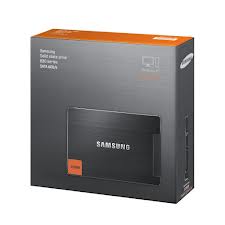 It was that time again for yet another upgrade to the old home desktop.
It was that time again for yet another upgrade to the old home desktop.
There’s been quite a few desktop upgrades in the time I’ve been blogging. The first was back in October of 2007, then again in December 2007 I added some accessories, in January 2008 I had a hard disk die, in December of 2008 I replaced the motherboard and CPU, in July 2010 I upgraded to Windows 7 64bit leaving Windows Vista behind, and most recently in October 2011 I upgraded my video card and replaced a dying power supply.
While I was potentially looking at building an entirely new desktop (Intel Core i5-3570K Ivy Bridge 3.4GHz) I decided to hold off for now and instead take the leap into SSDs, replacing my trusty Western Digital Raptor X WD1500AHFD 150GB 10,000 RPM with a SAMSUNG 830 Series MZ-7PC128D/AM 2.5″ 128GB SATA III MLC Internal SSD.
The choir of migrating the data was pretty painless although it did take quite sometime to run through the backups (you always make backups just in case) and then copy the partitions using Norton Ghost. When all the bits were done moving around I just unplugged the Raptor and plugged in the Samsung. Windows 7 booted right up and announced it had discovered new hardware and asked me to reboot. That was it… my desktop went from taking about 100-120 seconds to boot to taking about 30 seconds to boot.
I’ll give credit to NewEgg once again… they shipped in one day from New Jersey to Pennsylvania.
Here’s what I’m running these days?
- Intel Core 2 Quad Q9550 @2.99Ghz
- 8GB G.Skill PC2-6400 DDR2 memory (4 sticks)
- Gigabyte EP45-UD3P motherboard
- MSI R6950 Twin Frozr II OC Radeon HD 6950 2GB
- 128GB Samsung 830 SSD
- 1TB Western Digital SATA II hard disk
- 2TB Seagate Barracuda Green (5900RPM)
- Antec P180 case
- Rosewill RX750 power supply
- Logitech G15 keyboard
- Logitech G5 mouse
- Logitech C910 webcam
- 2 x ASUS 27″ LCD display
Cheers!
If you have a decently powerful system already with good RAM, an SSD will do wonders for the responsiveness of your system. One thing to make sure of is that you are using all your CPU cores to boot your system. By default Windows will only use one CPU core to boot with. But especially with an SSD you want all those cores churning through driver initializations and such. I have a 6-core AMD processor and got a 240GB SSD drive back in January. By turning on the additional CPU’s I cut my boot time down from 35 seconds to my current 16 seconds.
1) As the administrator, open a command prompt window or directly run “msconfig”.
2) Go to the “Boot’ tab.
3) Click “Advanced Options”
4) Change “Number of Processors” from it’s default to however many CPU cores you have (including hyper-threading cores if you have them).
5) Click OK and reboot.
Thanks for the tip Telair! It’s amazing how there’s always something new to learn.